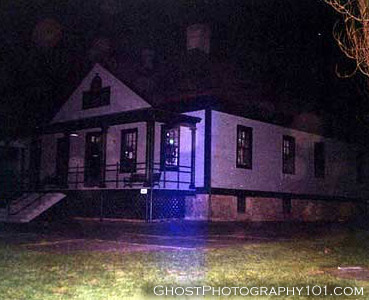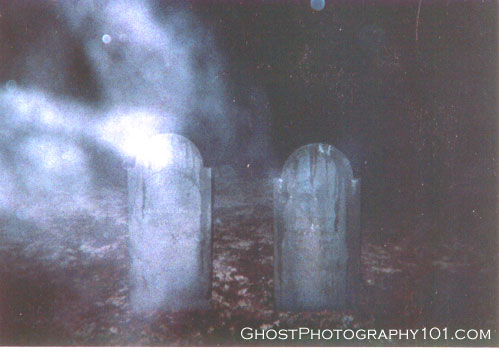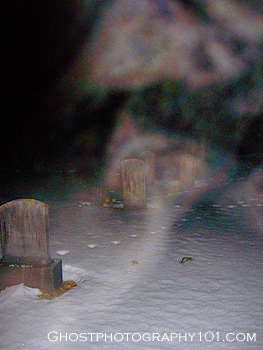As an Amazon Associate I earn from qualifying purchases. Click for details.
Ghost Photography Tips
The following is an edited excerpt from the first edition of Ghost Photography 101, by Fiona Broome.

Bring a camera to haunted places and take lots of photos.
You’ll learn the ins and outs of ghost photography on your own. Trial-and-error is fine.
However, the following tips might make the learning process easier.
First, learn where the “hot spots” are at the site. Ask others where they’ve felt the most chills, found the most EMF activity, or taken the best ghost photos. That’s a good place to start.
Take cues from your ghost hunting tools
If you have ghost hunting tools, they may help you identify the best locations.
For example, if your EMF meter detects energy spikes — or drops lower than it should — that’s a potential location for ghostly photos. Try taking photos standing directly at the location where your EMF meter indicated something odd.
However, sometimes when you’re in the middle of an anomaly — or a haunted spot — your camera won’t record anything unusual.
Step away from that spot. Turn around and take pictures of it from a distance and from several different angles.

Several ghost hunting tools can detect EMF-related anomalies. Of course, an EMF meter can reveal the most electromagnetic anomalies.
You may identify equally good, active locations using a hiking compass or more specialized tools such as an Ovilus or any real-time paranormal communication device.
If you have a hiking compass, the needle points in the direction of magnetic north.
However, if you’re near electromagnetic fields (EMF), the compass needle will point away from magnetic north and towards higher EMF. (Movement can easily affect hiking compasses, so I only pay attention to needle variations more than 30 degrees from magnetic north.)
The Ovilus is one of many tools that became popular during 2009. It seems to respond to EMF surges by talking. Using a pre-programmed vocabulary — plus additional words and names that baffle many researchers — the Ovilus “speaks” out loud. Similar tools include the Frank’s Box, the Shack Hack, ghost radar apps for mobile phones, and “ghost box” devices.
If you’re using one of these tools and it starts talking, take photos. Take lots of photos.
If someone’s camera or phone suddenly stops working, that’s another cue that EMF energy is interfering. Take photos right away.

Remember to take photos inside the area where the EMF or other electronic signal occurs, but also step away and point your camera so you’re looking at the location, from a distance of at least a few feet.
Your “gut feeling”
Your “gut feeling” is the single most useful tool to help you identify spots for ghost photography.
Whether you get goosebumps, the hair goes up on the back of your neck, or you simply feel prompted to take a photo, pay attention to those subtle cues.
Share those feelings with others. You may be surprised by how many people will confirm what you’ve felt.
I believe that everyone has some psychic sensitivities. They’re often felt as a “gut feeling.”
Few people feel 100% confident about their intuition.
Mentally note how you feel when you take good ghost photos. Soon, you’ll recognize those “gut feelings” more confidently… and then take more pictures when you do.
It’s important to learn to identify real anomalies and the normal things that can look like them.
However, it’s not as easy to create fake ghost photos as skeptical critics insist. When it doubt, trust your gut feeling.
